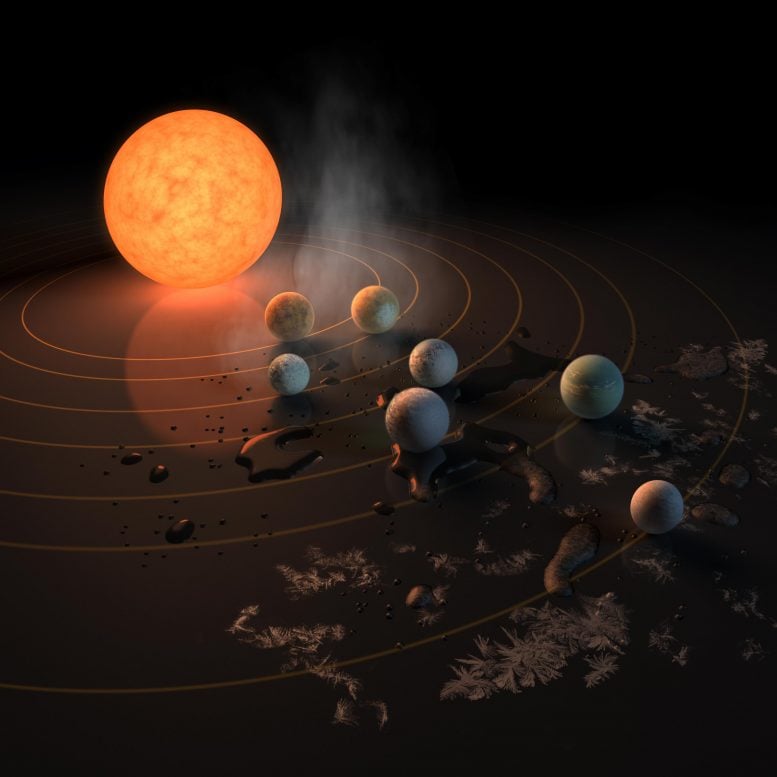Dark matter fluctuations in the lens system MG J0414+0534. The whitish blue color represents the gravitationally lensed images observed by ALMA. The calculated distribution of dark matter is shown in orange; brighter regions indicate higher concentrations of dark matter and dark orange regions indicate lower concentrations. Credit: ALMA (ESO/NAOJ/NRAO), K. T. Inoue et al.
Astronomers Observe Blobs of Dark Matter Down to a Scale of 30,000 Light-Years Across
Dark matter remains mysterious and… well… dark. While we don’t yet have a definite idea of what this cosmic “stuff” is made of, astronomers are learning more about its distribution throughout the Universe.
,
Since we can’t see it directly, observers need to use indirect methods to detect it. One way is through gravitational lensing. Another is by looking for emissions from hydrogen gas associated with small-scale dark matter structures in the Universe.
A group of astronomers led by Kaiki Taro Inoue of Kindai University in Japan used the Atacama Large Millimeter Array in Chile to study a distant gravitational lens system called MG J0414+534. A massive foreground galaxy is bending and distorting the light from a distant quasar that lies some 11 billion light-years away.
The result is four images of the quasar. When they looked at the data, the team found some strange anomalies in the images. They are actually variations in the distribution of dark matter along the line of sight between us and the quasar.
The gravitational lens magnified the fluctuations and analysis of the data allowed them to map the fluctuations down to a scale of 30,000 light-years.
What The Blobs of Dark Matter Mean
Throughout the universe, dark matter is associated with massive galaxies and galaxy clusters. However, small-scale clumps and distributions aren’t as well understood. So, astronomers want to find ways to map the smaller concentrations of it. Gravitational lensing provides one way to do that.
In the case of MG J0414+0534, the positions and shapes of the lensed quasar images look a little strange. They don’t fit the model of gravitational lensing predicted when you plug in the numbers for the galaxy and its associated dark matter component. READ MORE...



















